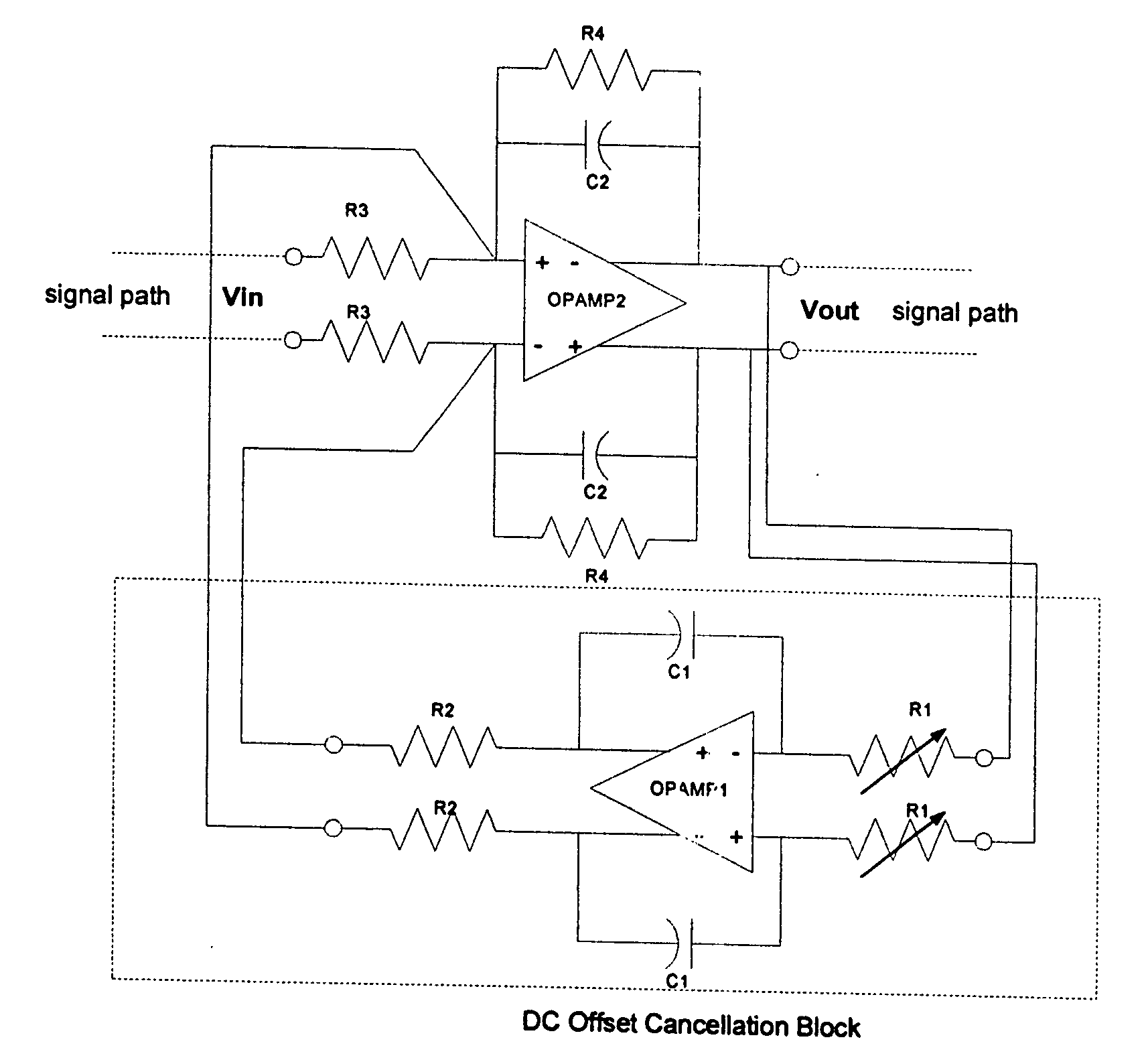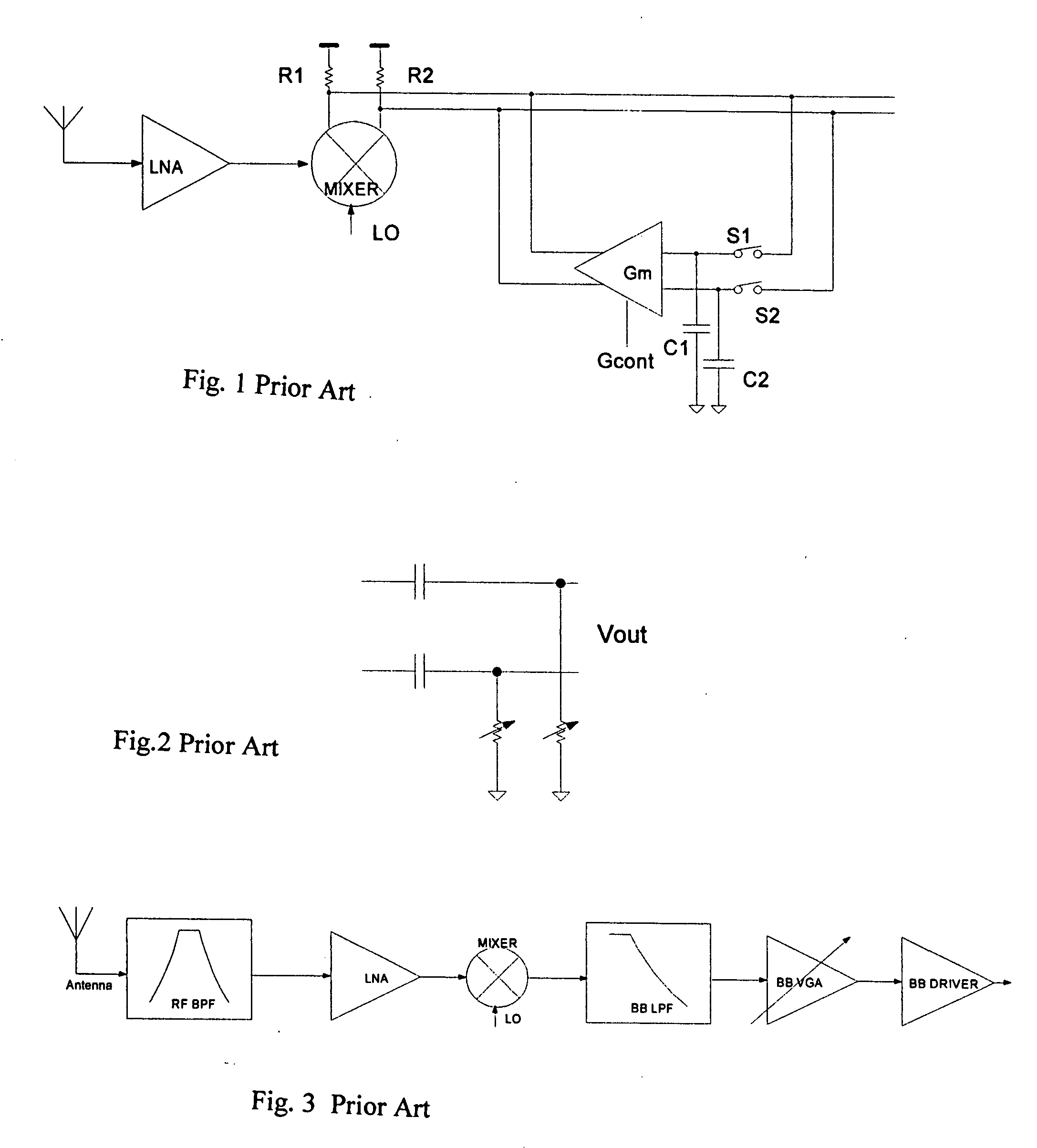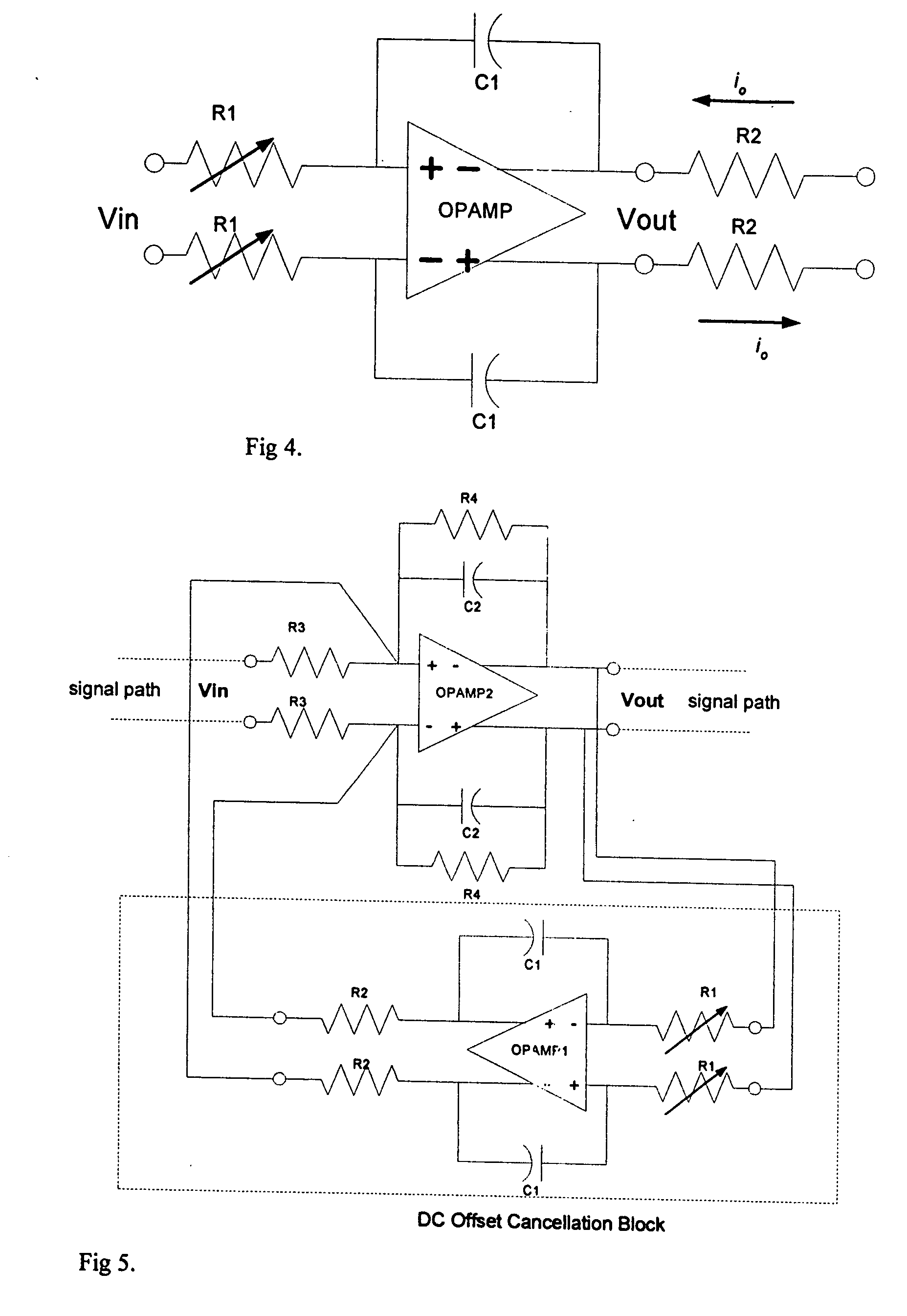DC offset cancellation in a direct-conversion receiver
a direct-conversion receiver and offset cancellation technology, applied in the direction of low-noise amplifiers, pulse automatic control, amplifiers with semiconductor devices/discharge tubes, etc., to achieve the effect of saving power and reducing silicon area
- Summary
- Abstract
- Description
- Claims
- Application Information
AI Technical Summary
Benefits of technology
Problems solved by technology
Method used
Image
Examples
Embodiment Construction
[0014]FIG. 4 shows the DC offset cancellation block (DCOC) of the present invention The circuit is used to feed back the integrated component from the output of a base-band amplifier of a ZIP receiver to a preceding stage. By negative feedback of the integrated component, the DC offset is minimized. The DCOC block comprises an OPAMP connected as an integrator or active low pass filter. The integrator has a feedback capacitor C1 connected between the inverting input and the non-inverting output, and another capacitor C1 connected between the non-inverting input and the inverting output. Each input is connected to a differential input voltage V in through a resistor R1. R1 is variable to change the cutoff frequency of the low pass filter. The output voltage V out of the integrator is connected to a virtual ground through a resistor R2 to flow an output current io equal to V out / R2. Thus V out is converted into ion, and R2 constitutes a voltage-to-current converter VIC.
[0015] The DCOC...
PUM
 Login to View More
Login to View More Abstract
Description
Claims
Application Information
 Login to View More
Login to View More - R&D
- Intellectual Property
- Life Sciences
- Materials
- Tech Scout
- Unparalleled Data Quality
- Higher Quality Content
- 60% Fewer Hallucinations
Browse by: Latest US Patents, China's latest patents, Technical Efficacy Thesaurus, Application Domain, Technology Topic, Popular Technical Reports.
© 2025 PatSnap. All rights reserved.Legal|Privacy policy|Modern Slavery Act Transparency Statement|Sitemap|About US| Contact US: help@patsnap.com



